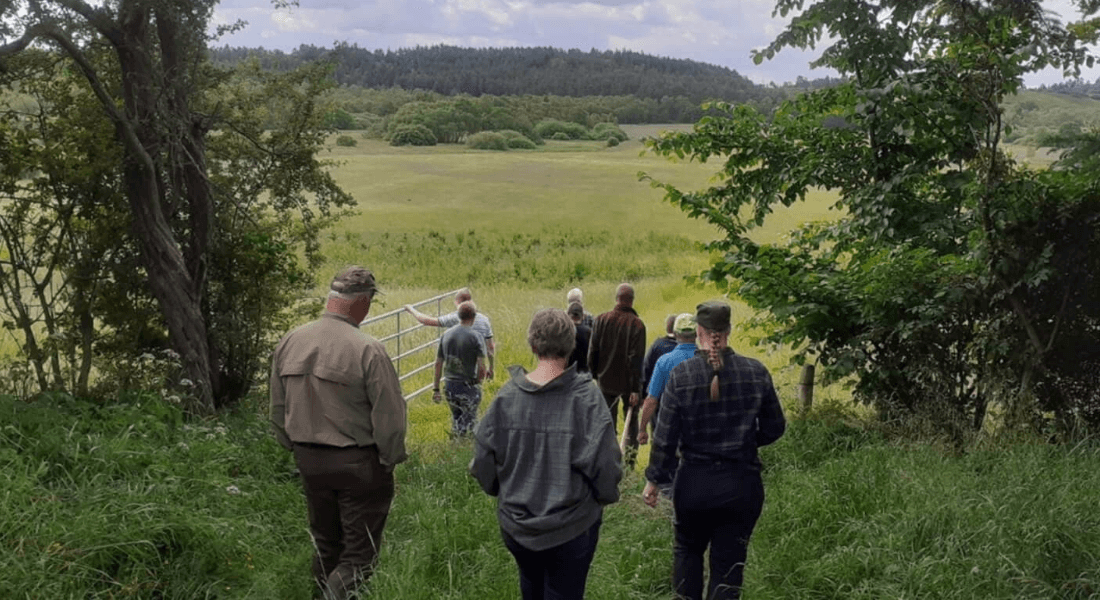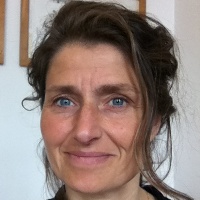For researchers

In the Living Lab, we want to engage researchers from all the disciplines at the University of Copenhagen, from PhD to professors, to develop and consolidate our new Living Lab. We hope that researchers will participate and use the data and cases from the lab in their courses and bring new data and perspectives to the lab.
We will start by arranging different events, possible cross-disciplinary courses, talks, and other activities. If you, as a researcher, have an idea for an activity relevant to the lab, please get in touch with the Living Lab Manager, Mette Frimodt-Møller.
The following five pilot projects will be carried out during the lab's first year:
Based on maps and narratives about past and present land use change, this subproject describes the changing uses and ownership of land in and around Åmosen. On this basis, the subproject will survey and test methods for unearthing values, interests, and preferences of local landowners, inhabitants, and other stakeholders with regard to rewetting initiatives and associated changes to land use. This can be supplemented by a socio-economic and legislative analysis to address matters of management and future ownership. This process will use historical material and involve:
- Experimentation with data generation.
- Modes of representation of the various forms of knowledge about the landscape.
- Citizen involvement in decision-making about the future of the landscape.
Landowners, inhabitants, municipalities, and interest organizations in and around Åmosen have repeatedly been included in proposals and plans for nature parks and improving recreational land use (1960s, 1980s, 1990s, and early 2000s).
For various reasons, many of these projects failed, stalled, or became minuscule versions of the original proposals. This pilot project will analyse the legacies of failed projects for future changes by asking how past projects shape understanding of current calls for change. By carefully attending to how the projects failed, the pilot project attends to changing understandings of ownership and nature, accessibility, and mobility as well as land use conflicts.
To do so, we will map and analyse past projects and interview both locals and professionals who were involved in past and current projects that failed or were fundamentally changed.
The pilot project will not only inform local decision makers on how and why past proposals failed, but also propose holistically informed guidelines for future decision making.
Denmark’s terrestrial surface is limited, but there are plenty of wishes for land use in the green transition, e.g., energy parks, rewetting of wetlands, protected natural habitats, infrastructure and settlement, and agriculture. This pilot project aims to set up scenarios for and model the anticipated future landscape composition of Åmosen. The main scenario will be compliance with existing EU and nationally implemented policies related to land use, including the EU Nature Restoration Law, the Water Framework Directive, the rewetting of wetlands, land-based energy production, etc. Future land uses will be modeled using the Clue Mondo spatially distributed model.
Contribution to society
The resulting maps will illustrate land allocation in Åmosen compliant with policy obligations. This will support municipal work on land planning. During the definition of the main scenario, a science-policy-stakeholder dialog meeting will facilitate discussions about the future use of Åmosen, trade-offs between conflicting interests, and potential pathways toward scenario goals.
Passive restoration projects, where areas are physically restored and left for spontaneous succession, are widespread across the Danish landscape. However, an increasing bulk of evidence suggests that this practice does not lead to the desired biodiversity outcomes. Instead, active measures such as seeding with natural species and inoculation with thin layers of topsoil from intact natural areas have proven to put restored areas on a trajectory towards conditions with more intact biodiversity. In Åmosen, this subproject will study the use of inoculation and seeding in a field experiment in a rewetted area. If no suitable field sites (i.e., newly rewetted sited) can be located, the experiment can be changed to a mesocosm setup where peat soils are moved to an off-site location and experimental treatments applied there. The results will inform future practices on the potential for gaining both carbon sequestration and biodiversity when rewetting peatlands.
Draining Åmosen has profoundly impacted the biogeochemical cycling of carbon, nitrogen, phosphor, and many more elements, with increased loss of C and N to the aquatic and atmospheric environment. By restoring the hydrology of Åmosen, as well as other wetlands across the country, we are moving into the realms of the unknown. While it is highly certain that CO2 and net N export emissions will decrease after rewetting, CH4 emissions and phosphor export are likely to increase. The resultant biogeochemical cycles of the current and future Åmosen is the integral of all natural and anthropogenic drivers, making it highly complex to accurately predict the magnitudes of changes. This subproject will focus on linking the current and possible future cycling of C, N, and P with its environmental drivers, such as biodiversity, hydrology, and past land use, disciplines that are represented across this living lab. We aim to identify suitable case study areas together with local stakeholders and the living lab partners at KU to be able to study soil biogeochemistry and climate gases in likely development scenarios in regard to hydrology and land uses (anthropogenic and natural).
Living Lab Manager
 Mette Frimodt-Møller is Living Lab Manager, and you can contact her here.
Mette Frimodt-Møller is Living Lab Manager, and you can contact her here.
